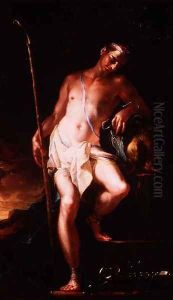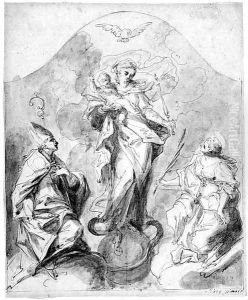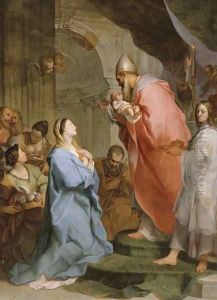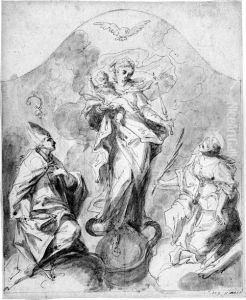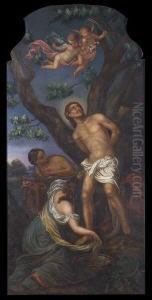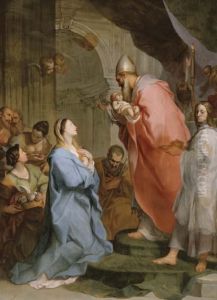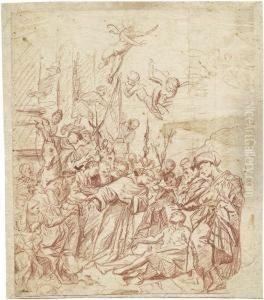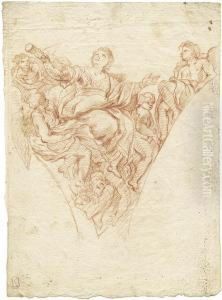Johann Kaspar Sing Paintings
Johann Kaspar Sing, born in 1651, was a notable figure in the Baroque period of art, although not as widely recognized as some of his contemporaries. His contributions to the art world, particularly in the realm of sculpture and stucco work, reflect the opulence and dynamism characteristic of the Baroque style. Sing's work was primarily centered in Southern Germany, where he left a lasting impact on the aesthetic developments of religious and secular buildings of his time.
Sing's early life is shrouded in a degree of mystery, as detailed records of his training and initial works are scarce. It is believed that he was apprenticed to a local master in his hometown, which was a common practice for artists during this period. His talent in sculpting and designing intricate stucco decorations quickly became evident, and by his late twenties, Sing had begun to establish himself as a skilled artisan capable of handling major commissions.
Throughout his career, Johann Kaspar Sing was particularly renowned for his ability to meld architectural elements with sculptural techniques to create cohesive and stunningly detailed interiors. Churches, chapels, and palaces across Southern Germany bear the hallmark of his artistry, with elaborate altarpieces, pulpit designs, and ceiling frescoes that draw the observer's eye upwards in awe. His work not only exemplified the grandeur of the Baroque style but also contributed to its evolution by integrating local artistic traditions with influences from Italy and France, thereby creating a unique regional variant of the Baroque aesthetic.
Despite his success, documentation on Sing’s personal life remains minimal, and much of what is known about his character and perspective on art comes from his surviving works and a few contemporary accounts. He was described as a deeply devout man, which is reflected in the religious themes that dominate his oeuvre. His dedication to his craft and his ability to work closely with architects and patrons alike made him a sought-after artist during his lifetime.
Johann Kaspar Sing passed away in 1729, leaving behind a legacy that, while not as widely celebrated as that of some of his contemporaries, has endured as an important part of the artistic heritage of Southern Germany. Today, scholars and art enthusiasts continue to study his works, not only for their aesthetic and historical value but also for their contribution to the understanding of Baroque art's regional diversity. Sing's life and work exemplify the richness of this period, highlighting the interplay between artistic innovation and adherence to tradition that characterized the Baroque era.
